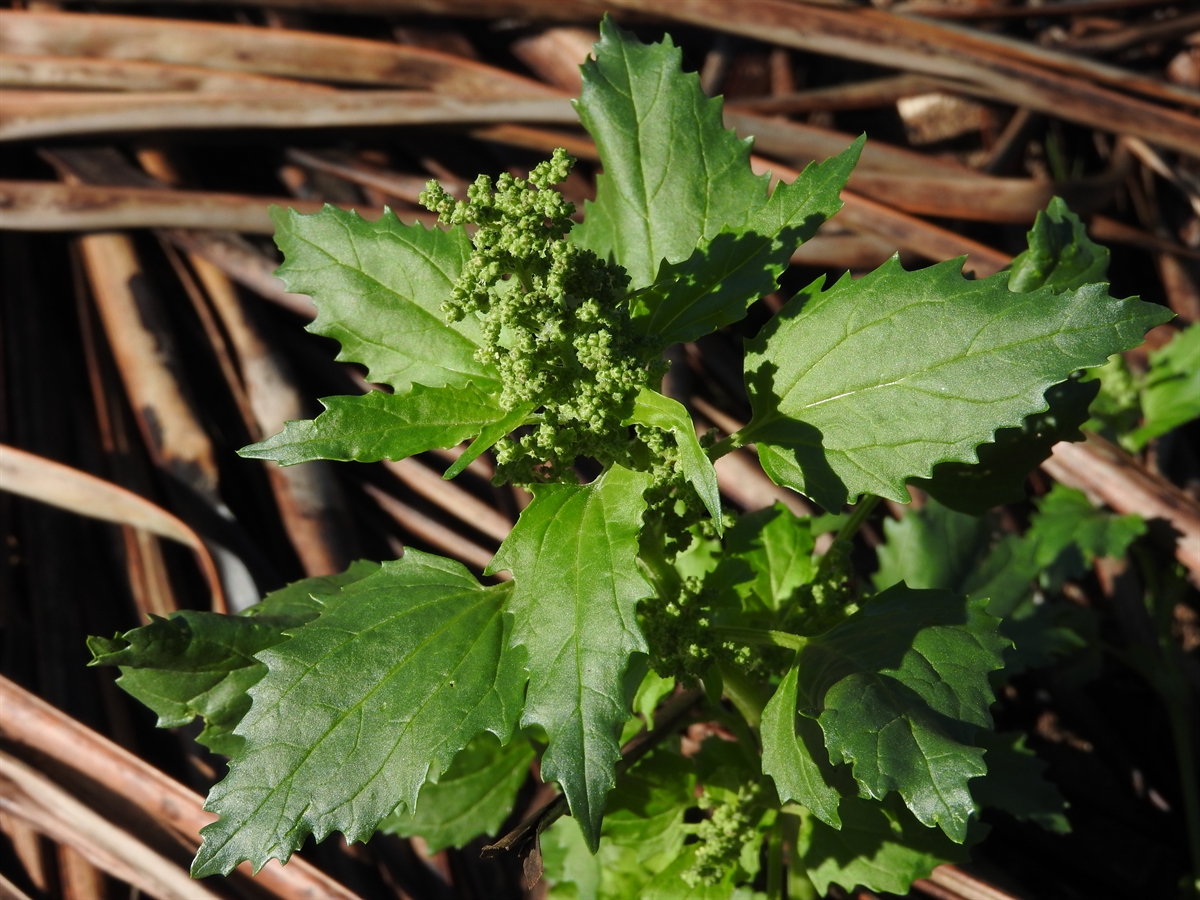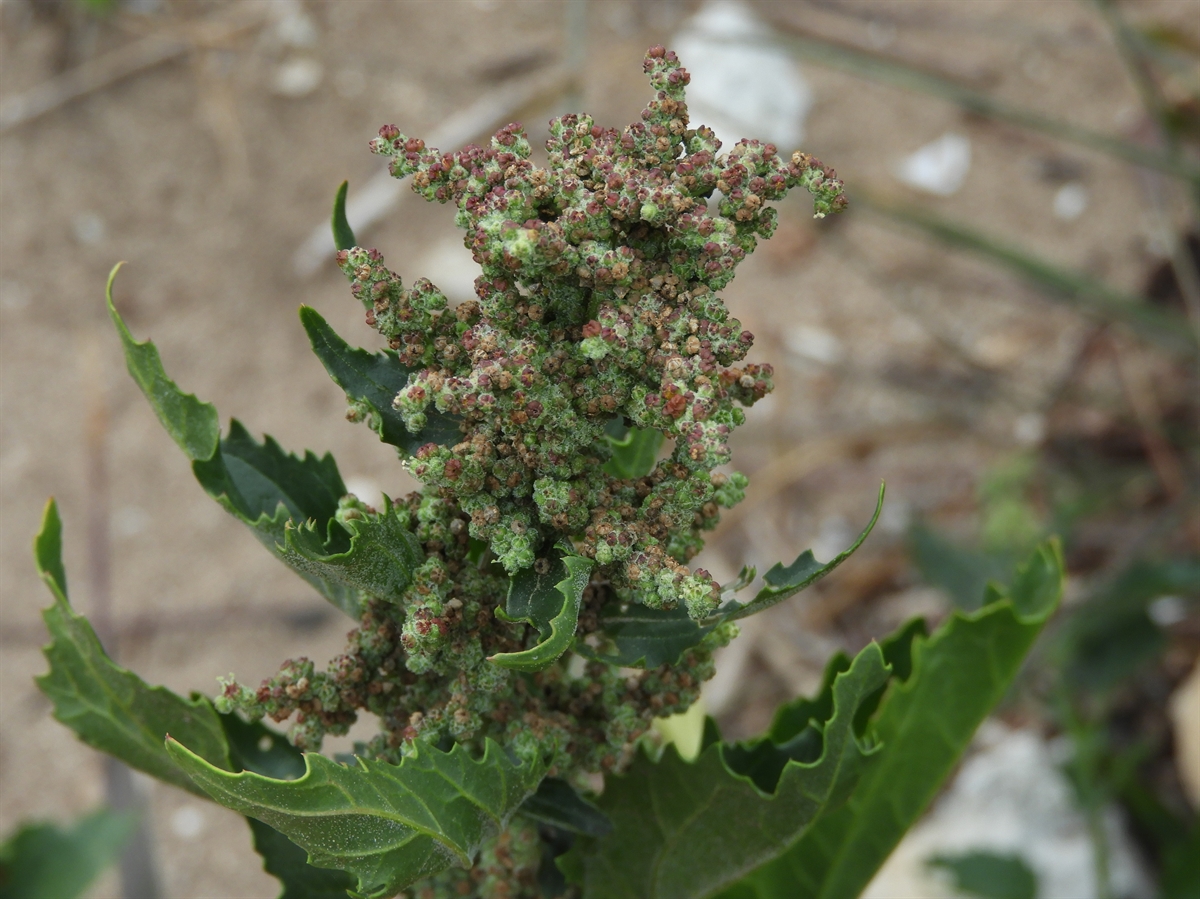Habit: Chenopodiastrum murale grows as an annual to 60 cm in height (usually shorter). The stems and leaves can be slightly “mealy”. The glabrous leaves are arranged alternately, ovate-lanceolate, with an toothed/serrate margin and acute leaf apex.
The incomplete, imperfect, actinomorphic, sessile flowers are arranged in tight terminal and upper axillary cymes or panicles. The calyx has 5 unfused sepals. There is no corolla. The staminate flowers have 5 unfused stamens and no carpel. The carpellate flowers have a superior ovary with a single locule and seed and no stamens. The fruit is an achene at maturity.
Habitat: Chenopodium murale grows in Human Altered environments (yards, abandoned fields, roadsides).
Distribution: Chenopodium murale is NOT native to the Lucayan Archipelago but now occurs throughout all island groupings. It is native to northern Africa, the Middle East, Europa and the Indian subcontinent. It has become a pan tropical and subtropical weed.
Medicinal/Cultural/Economic usage: Chenopodium murale is used medicinally in the Lucayan Archipelago to treat circulatory issues and gastrointestinal problems.

